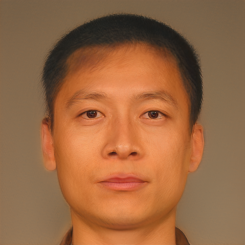Recent works have demonstrated the feasibility of GAN-based morphing attacks that reach similar success rates as more traditional landmark-based methods. This new type of "deep" morphs might require the development of new adequate detectors to protect face recognition systems. We explore simple deep morph detection baselines based on spectral features and LBP histograms features, as well as on CNN models, both in the intra-dataset and cross-dataset case. We observe that simple LBP-based systems are already quite accurate in the intra-dataset setting, but struggle with generalization, a phenomenon that is partially mitigated by fusing together several of those systems at score-level. We conclude that a pretrained ResNet effective for GAN image detection is the most effective overall, reaching close to perfect accuracy. We note however that LBP-based systems maintain a level of interest : additionally to their lower computational requirements and increased interpretability with respect to CNNs, LBP+ResNet fusions sometimes also showcase increased performance versus ResNet-only, hinting that LBP-based systems can focus on meaningful signal that is not necessarily picked up by the CNN detector.
翻译:最近的工作表明,基于GAN的变形攻击是可行的,其成功率与较传统的里程碑式方法相近。这种新型的“深”变式可能需要开发新的足够探测器来保护面部识别系统。我们根据光谱特征和LBP直方图特征以及CNN模型,在内部数据集和交叉数据集的情况下,探索简单的深变式探测基线,以及CNN模型。我们发现,基于LBP的简单系统在内部数据集设置中已经非常精确,但与一般化挣扎不休,这种现象通过在分数一级将其中若干系统混在一起而部分减轻。我们的结论是,对GAN图像探测有效的预先训练的ResNet是最有效的整体,接近于完全准确性。但我们注意到,基于LBP的系统保持了一定的兴趣水平:除了较低的计算要求和对CNNCS的可解释性增强之外,LBP+ResNet的聚合性有时也显示性能提高,而只使用ResNet,暗示基于LBP的系统可以侧重于有意义的信号,而CNNCS探测器不一定能接收到的信号。






